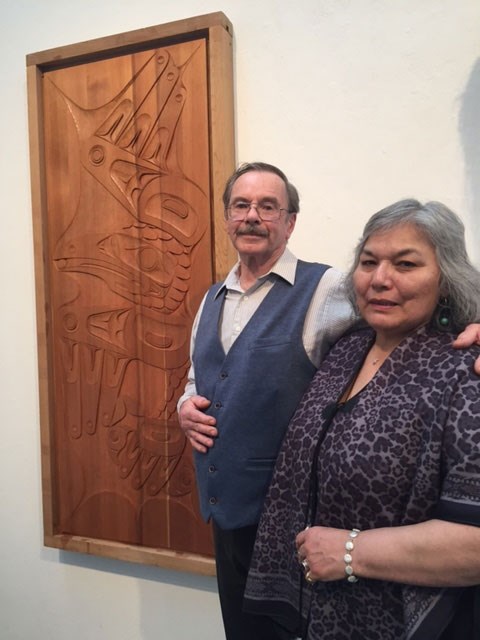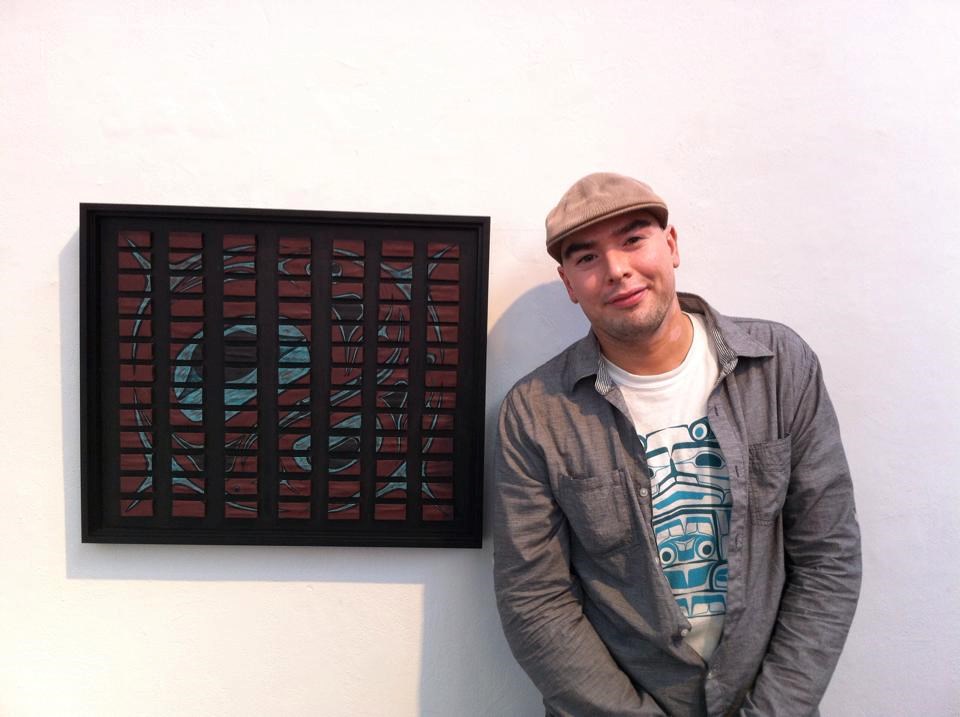Through its years on Granville Island, Emily Carr University has come to serve as a kind of gateway for many artists. Its calling is no more apparent than at its annual graduate show, an art exhibition held at the end of the school year in an ode to the graduating class.
So, it is only fitting that one of the first displays in this year’s showcase, just steps from the main entrance, is a carved door panel bearing a raven in red cedar, by visual arts student William Callaghan.
The renowned arts school was where Callaghan, a carver from southern Yukon, found the resolve to make strides in his life, despite suffering from a traumatic brain injury, having been struck by a drunk driver in 2004.
“It really connected him – physically, mentally, emotionally and spiritually,” said Callaghan’s mother, Pearl, standing by his installation at the show last Friday, surrounded by family and newly minted graduates.
Earlier in the day, Pearl and her husband Mike attended the school convocation ceremony, where Callaghan’s nephews walked the stage in acceptance of his posthumous Bachelor of Fine Arts degree.
Callaghan, 33, died last April. The family declined to publicly disclose the cause of death but said it was in relation to injuries sustained in 2004.
Callaghan’s father, Mike, first brought his son to Emily Carr while he was undergoing medical examinations in Vancouver shortly after the collision. It was a difficult period then, he recalls, but Callaghan was taking to carving and showing inherent promise.
Mike recalls saying to his son, “You have the potential to come to a university like this with your artwork.”
A few years later, Callaghan would quietly finish his GED and submit his bid for Emily Carr.
The return to Granville Island for Mike, despite having visited several times since the duo's first venture, is at once a revered source of pride and of immeasurable heartache.
“This was his second home,” he said.

This September, when the school opens its doors to the new $122-million campus on Great Northern Way, a reproduction of Callaghan's carved door panel, titled "Yeil" or Raven – the very one on display now – will be placed on the entrance of the University’s Aboriginal Gathering Place.
“We wanted to bring William with us to the new campus,” said Jennifer DeDominicis, vice president of enrolment and student services at the school. “We want to acknowledge his impact, and feel that it is important for the many students, staff and faculty he touched.”
Callaghan – who most identified with his Tlingit heritage, while also bearing an even mix of Irish, French and Norwegian roots – was an active member in the school’s Aboriginal initiatives.
Longtime friend and second year visual arts student, Megan Jensen, who was asked to be a mace bearer at this year’s convocation ceremony – a role designated to a graduating student most years – credits Callaghan for her own pursuits.
”I remember looking at all his work on the walls, and I remember his devotion to it and love for it was so strong, that I immediately felt this pull in me,” Jensen said.
Jensen, who grew up performing in the same dance group as Callaghan in the Carcross/Tagish First Nations community in southern Yukon, moved to Vancouver two years ago to pursue her studies.
“He really inspired me to go to Emily Carr, as well,” she said. “He went. Why can’t I go? Without even telling me to do anything, I learned a lot from him just being alive.”
“William, to me, was a miracle,” said Pearl, meaning, “people who have a traumatic experience and who don’t fall through the cracks.”
And if Callaghan's gateway – his door panel, "Yeil" – were to provide a message for the many students to pass by it on the new campus, what might that message be?
“You can do anything you want,” she said.
The Show at Emily Carr University, the final graduate exhibition on Granville Island, is open to the public now through to May 21. For more information visit ecuad.ca


